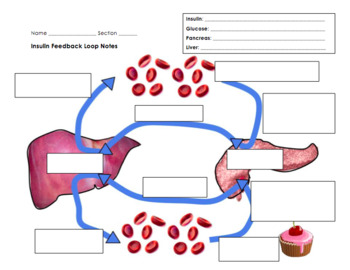
Positive and negative feedback are more complicated mechanisms that enable these three basic components to maintain homeostasis for more complex physiological processes. The sensors, integrating center, and effectors are the basic components of every homeostatic response. One example is the kidney, which retains water if blood pressure is too low. An effector is any organ or tissue that receives information from the integrating center and acts to bring about the changes needed to maintain homeostasis.The most important example is the hypothalamus, a region of the brain that controls everything from body temperature to heart rate, blood pressure, satiety (fullness), and circadian rhythms (including, sleep and wake cycles). The integrating center or control center receives information from the sensors and initiates the response to maintain homeostasis.An example is peripheral chemoreceptors, which detect changes in blood pH. A sensor or receptor that detects changes in the internal or external environment.All homeostatic control mechanisms have at least three interdependent components for the variable being regulated: Homeostasis can be influenced by either internal or existing conditions (instrinsic factors) or external or environmental conditions ( extrinsic factors) and is maintained by many different mechanisms. The hypothalamus is involved in the regulation of body temperature, heart rate, blood pressure, and circadian rhythms (which include wake/sleep cycles). The kidneys are responsible for regulating blood water levels, re-absorption of substances into the blood, maintenance of salt and ion levels in the blood, regulation of blood pH, and excretion of urea and other waste products. The liver also helps to regulate lipid metabolism and is the primary site of cholesterol production. The liver is responsible for metabolizing toxic substances and with signaling from the pancreas maintains carbohydrate metabolism. The liver, the pancreas, the kidneys, and the brain (hypothalamus, the autonomic nervous system and the endocrine system) help maintain homeostasis. Homeostasis refers to the body’s ability to physiologically regulate its inner environment to ensure its stability in response to fluctuations in external or internal conditions. 8.1 The Concept of Homeostasis 8.2 Disease as a Homeostatic Imbalance 8.3 Measuring Homeostasis to Evaluate Health 8.4 Solubility 8.5 Solution Concentration 8.5.1 Molarity 8.5.2 Parts Per Solutions 8.5.3 Equivalents 8.6 Dilutions 8.7 Ion Concentrations in Solution 8.8 Movement of Molecules Across the Membrane 8.9 Summary 8.10 References For referencing this work, please click here. This text is published under creative commons licensing. This hormone stimulates the production of red blood cells.Chapter 8: Homeostasis and Cellular Function Production of human red blood cells ( erythropoiesis) - A decrease in oxygen is detected by the kidneys and they secrete erythropoietin.

Some is stored as body fat, and other glucose is stored as glycogen in the liver and muscles. Regulation of blood sugar in humans - When blood sugar rises, insulin sends a signal to the liver, muscles, and other cells to store the excess glucose.Human metabolism - When a human is hungry, metabolism slows down to conserve energy and allows the human to continue living with less food.Signals are sent to the heart from the brain, and heart rate slows down, thus helping blood pressure to return to normal. Human blood pressure - When blood pressure increases, signals are sent to the brain from the blood vessels.If the temperature drops, the body shivers to bring up the temperature and if it is too warm, the body will sweat to cool down due to evaporation. Human body temperature - The hypothalamus of a human reacts to temperature fluctuations and responds accordingly.Your body has all different kinds of negative feedback loops.


 0 kommentar(er)
0 kommentar(er)
